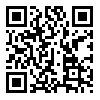یکشنبه 23 آذر 1404
[Archive]
دوره 19، شماره 5 - ( 3-1400 )
جلد 19 شماره 5 صفحات 123-123 |
برگشت به فهرست نسخه ها
Download citation:
BibTeX | RIS | EndNote | Medlars | ProCite | Reference Manager | RefWorks
Send citation to:



BibTeX | RIS | EndNote | Medlars | ProCite | Reference Manager | RefWorks
Send citation to:
Mansouri N, Hajari MA, Sadeghi Abandansari H, Niknejadi N, Heidari Khoei H, Baharvand H et al . O-22 Application of auto-crosslinked hyaluronic acid hydrogel loaded with the bone marrow mesenchymal stem cell-extracellular vesicles to prevent the formation of intrauterine adhesions in a rat model. IJRM 2021; 19 (5) :123-123
URL: http://ijrm.ir/article-1-2954-fa.html
URL: http://ijrm.ir/article-1-2954-fa.html
O-22 Application of auto-crosslinked hyaluronic acid hydrogel loaded with the bone marrow mesenchymal stem cell-extracellular vesicles to prevent the formation of intrauterine adhesions in a rat model. International Journal of Reproductive BioMedicine. 1400; 19 (5) :123-123
چکیده: (623 مشاهده)
Background: Severe trauma of uterus may cause damage in the basal layer of endometrium leading to intrauterine adhesion (IUA) or Asherman’s syndrome (AS), and eventually infertility. Nowadays, conventional approaches including surgical adhesiolysis and following hormone therapy are used to treat AS in clinics. However, the high recurrence after these procedures reveals the importance and superiority of IUA prevention instead of treatment. As a preventive agent, auto-crosslinked hyaluronic acid (HA) hydrogels can provide an anti-adhesive barrier to decrease the incidence of IUA. In addition, MSC-derived extracellular vesicles (EVs) have been recently introduced as an effective and novel therapeutic agent to reduce inflammation and fibrosis. This study has been designed to investigate whether combining the auto-crosslinked HA hydrogel with mesenchymal stem cell-extracellular vesicles (MSC-EVs) could improve the efficiency of HA in endometrial regeneration in the rat model of AS.
Objective: To evaluate whether the combination of HA hydrogel and MSC-EVs could facilitates functional regeneration of injured uterus in experimental rats.
Materials and Methods: Forty eight-week-old female Wistar rats weighting 200–250 g were randomly assigned into 5 groups (n = 8/each): I) Intact group: without any intervention, II) AS Model group: model was established by three surgical steps of mechanical injury (incision, curettage, and suture), III) Sham surgery group: Subjected to the abdominal surgery, incisions and suturing, but not the curettage procedure, IV) HA + MSC-EVs: A mixture of 400 μl HA hydrogel + 160 μg/kg/dose MSC-EVs (around 200 μl hydrogel containing 20 μg EV per each horn) was injected into the uterine horn immediately after making the AS model and V) HA: Receiving an intrauterine injection of only 400 μl HA hydrogel immediately after making the AS model. Two weeks after the transplantation, four rats from each group sacrificed and uterine samples were harvested to be evaluated histologically by H&E and Masson’s trichrome staining. The remaining four animals in each group were coupled with fertile males (female: male = 2:1) 1 week after modeling for 3 months. The number of deliveries and the cumulative number of pups were assessed at the end of this time to survey reproductive function.
Results: Histology examination revealed significantly thicker endometrium, increased gland numbers and fewer fibrotic areas in the HA + MSC-EVs and HA transplantation groups compared with the model group. The cumulative number of pups and number of deliveries also showed a significant increase in the HA group compare to the model group. But our results displayed no significant differences between the HA + MSC-EVs and HA groups in terms of morphometric parameters and mating test outcomes.
Conclusion: MSC-EVs cannot amplify preventive properties of HA on the rat model of AS.
Objective: To evaluate whether the combination of HA hydrogel and MSC-EVs could facilitates functional regeneration of injured uterus in experimental rats.
Materials and Methods: Forty eight-week-old female Wistar rats weighting 200–250 g were randomly assigned into 5 groups (n = 8/each): I) Intact group: without any intervention, II) AS Model group: model was established by three surgical steps of mechanical injury (incision, curettage, and suture), III) Sham surgery group: Subjected to the abdominal surgery, incisions and suturing, but not the curettage procedure, IV) HA + MSC-EVs: A mixture of 400 μl HA hydrogel + 160 μg/kg/dose MSC-EVs (around 200 μl hydrogel containing 20 μg EV per each horn) was injected into the uterine horn immediately after making the AS model and V) HA: Receiving an intrauterine injection of only 400 μl HA hydrogel immediately after making the AS model. Two weeks after the transplantation, four rats from each group sacrificed and uterine samples were harvested to be evaluated histologically by H&E and Masson’s trichrome staining. The remaining four animals in each group were coupled with fertile males (female: male = 2:1) 1 week after modeling for 3 months. The number of deliveries and the cumulative number of pups were assessed at the end of this time to survey reproductive function.
Results: Histology examination revealed significantly thicker endometrium, increased gland numbers and fewer fibrotic areas in the HA + MSC-EVs and HA transplantation groups compared with the model group. The cumulative number of pups and number of deliveries also showed a significant increase in the HA group compare to the model group. But our results displayed no significant differences between the HA + MSC-EVs and HA groups in terms of morphometric parameters and mating test outcomes.
Conclusion: MSC-EVs cannot amplify preventive properties of HA on the rat model of AS.
نوع مطالعه: Congress Abstract |
| بازنشر اطلاعات | |
 |
این مقاله تحت شرایط Creative Commons Attribution-NonCommercial 4.0 International License قابل بازنشر است. |

